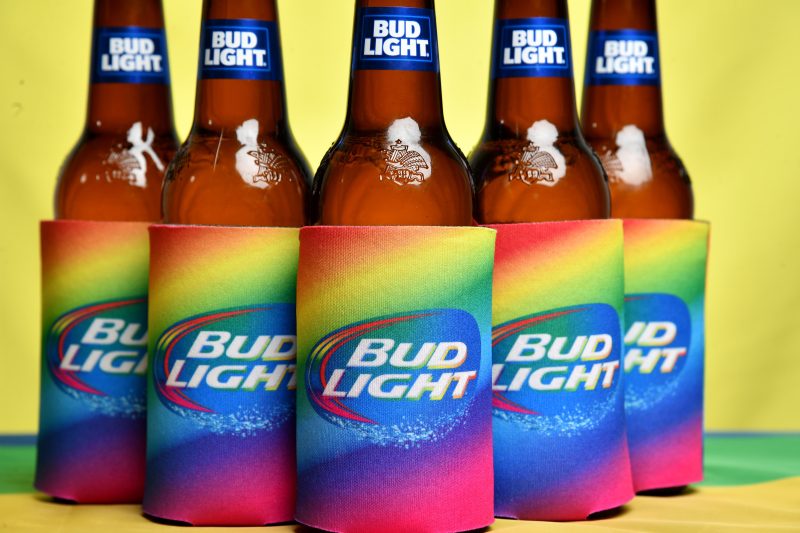The marketing plan was obviously courting controversy from the outset. Bud Light, the most popular beer in the country, was going to put together a campaign centered on a group that makes up less than 9 percent of the population of the United States? The beer brand planned ads targeting this small subgroup, despite the political overtones of doing so — despite the risk of associating the brand so closely with a lifestyle that was foreign to most Americans.
But Alissa Heinerscheid, Bud Light’s vice president of marketing, celebrated the move in a statement.
The beer brand had “deepened our commitment to the state of Texas with our ‘Brewed in Texas’ campaign,” she said in 2022, pointing to ads featuring a bull rider and a star player on Mexico’s national soccer team. This play for a specific niche wasn’t going to compel any white-collar metropolitanites to grab a bottle of the beer, but maybe it would get more Hispanic Texans to do so — enough to potentially make the push worthwhile.
After all, Bud Light’s position in the market had been sliding for years. It remains the best-selling beer in the United States, but its market share has slipped downward over the past decade.
If you can craft a marketing pitch to a lot of smaller subsets of the population, maybe you can reverse the direction of those lines. After all, Bud Light is a brand that serves as a vehicle for its parent company, AB InBev, to make money. So in recent years it has expanded its already robust marketing approach and its product line, adding seltzers and flavor blends, among other things.
Speaking on a podcast this month, Heinerscheid offered an overview of the mandate she’d been given when she started in her position.
“This brand is in decline. It’s been in decline for a really long time. And if we do not attract young drinkers to come and drink this brand, there will be no future for Bud Light,” she explained. The brand had been identified as being “fratty” with a “kind of out-of-touch humor,” she added, so her goal was to “evolve and elevate” it.
“What does evolve and elevate mean? It means inclusivity. It means shifting the tone,” she said. “It means having a campaign that’s truly inclusive and feels lighter and brighter and different and appeals to women and to men.”
A few days later, one facet of that shift became apparent. Dylan Mulvaney, a trans woman, posted a short video on her Instagram page touting the beer.
A post shared by Dylan Mulvaney (@dylanmulvaney)
The play from the beer’s perspective is pretty obvious. Mulvaney has 1.8 million followers on the social media platform, many of whom may have been presented with a Bud Light ad for the first time. The spot isn’t about being trans in the way that Bud Light’s Texas ads were about being Texan, but even if it had been, some 2 percent of the country identifies as transgender or nonbinary, the Pew Research Center found last year. And to Heinerscheid’s point about young drinkers: About 5 percent of Americans under the age of 30 identify that way.
You may know what happened next. When Bud Light advertised in magazines targeting gay Americans in the late 1990s, it took religious leader Jerry Falwell to elevate it for criticism to a national audience. Now, though, the Mulvaney ad could be shared widely over the internet by both supporters and critics. And it was — with a number of those critics casting the ad as a somehow unacceptable departure for the brand.
We’ve seen similar outcry emerge with regularity over the past few years; some brand that conservative Americans consume takes an action that is viewed as unacceptably liberal and it briefly becomes a target of right-wing opprobrium or calls for boycotts. These don’t often have a measurable effect on the corporate targets.
Instead, the outbursts stem mostly from the right’s robust outrage pipelines. Decrying things as “woke” or otherwise hostile to conservative values and habits is a surefire way of getting attention. And, sure enough, Fox News and the New York Post and the Daily Mail and the other usual participants in the process have spun up their machinery to document the anti-Bud Light backlash.
The Mulvaney-Bud Light video essentially served as a jumping-off point for a different advertising campaign, one in which conservatives use Bud Light as a foil for their own demonstrations of their right-wing bona fides. Politicians like Rep. Dan Crenshaw (R-Tex.) offered social media posts calling for people to boycott Bud Light (though in Crenshaw’s case, he replaced it with another AB InBev brand). Musicians popular with conservative audiences spoke out against the brand; Kid Rock used an AR-15-style rifle to pepper several cases of beer with bullets.
“Grandpa’s feeling a little frisky today,” the 53-year-old musician said shortly before he pulled the trigger — which is kind of the point. The beer brand wants to expand its appeal to younger drinkers and women, seeing its market share slip as it is associated with older men like Kid Rock.
There’s an obvious parallel here. The Republican Party itself is in a similar position as Bud Light, appealing mostly to older White voters. It has occasionally talked about trying to expand its appeal, including after the 2022 election, but efforts to do so are anathema to its core base of support.
Like the Republican Party’s approach to young voters, the right-wing anger at Bud Light at times misunderstands the problem that is being addressed. The New York Post, for example, suggested that brands like Bud Light are pressured into reaching out to spokespeople like Mulvaney because they’re terrified of falling short on a third-party measure of their inclusivity.
“At stake is their Corporate Equality Index — or CEI — score, which is overseen by the Human Rights Campaign, the largest LGBTQ+ political lobbying group in the world,” the paper’s Dana Kennedy wrote Friday. She went on to note that HRC had “received millions from George Soros’ Open Society Foundation.”
This is a bizarre argument, but a familiar one. It is somehow incomprehensible that Bud Light should actively be interested in courting a younger population that is sincerely more open to LGBTQ Americans. Those under age 30 are 16 percentage points more likely to say the country hasn’t gone far enough to welcome those who are transgender than they are to say we’ve gone too far, according to Pew. Those age 65 and up are 12 points more likely to say we’ve gone too far.
But since much of the outcry is coming from those who view transgender Americans with hostility, the Mulvaney spot is framed as being inexplicable outside of the context of some all-powerful report card offered by a nonprofit organization. It’s the same response we see from people like Elon Musk to the fact that younger people are more likely to vote Democratic: It must be because they are somehow indoctrinated. It can’t be that they simply have different values or beliefs than those on the right. (That so many on the right exist within an impermeable bubble of rhetorical agreement certainly reinforces this tendency.)
It remains to be seen how the Mulvaney spot will affect Bud Light’s bottom line. Perhaps the brand will see a brief dip in sales as conservatives reject it. Perhaps that will be made up for by younger people and allies of the transgender community deciding to pick up a six-pack. Maybe, as Heinerscheid hopes, that effect will linger and the brand will come to be seen not as “fratty” but as one that has evolved to reflect the views of the younger beer-buying population.
What Bud Light is trying to do is not much different from what the Republican Party wants to do: bring in new allies. And in each case, the same group — older conservative men — is pushing back against the idea. The question for Bud Light, then, is whether its base of support is less heavily dependent on that group than is the GOP.
Or whether it can simply dice up the beer market in enough ways and with enough targeted ads to reverse its downward skid in the aggregate. Perhaps it’s time for a campaign targeting California, instead.



























